- News
- Reviews
- Bikes
- Accessories
- Accessories - misc
- Computer mounts
- Bags
- Bar ends
- Bike bags & cases
- Bottle cages
- Bottles
- Cameras
- Car racks
- Child seats
- Computers
- Glasses
- GPS units
- Helmets
- Lights - front
- Lights - rear
- Lights - sets
- Locks
- Mirrors
- Mudguards
- Racks
- Pumps & CO2 inflators
- Puncture kits
- Reflectives
- Smart watches
- Stands and racks
- Trailers
- Clothing
- Components
- Bar tape & grips
- Bottom brackets
- Brake & gear cables
- Brake & STI levers
- Brake pads & spares
- Brakes
- Cassettes & freewheels
- Chains
- Chainsets & chainrings
- Derailleurs - front
- Derailleurs - rear
- Forks
- Gear levers & shifters
- Groupsets
- Handlebars & extensions
- Headsets
- Hubs
- Inner tubes
- Pedals
- Quick releases & skewers
- Saddles
- Seatposts
- Stems
- Wheels
- Tyres
- Health, fitness and nutrition
- Tools and workshop
- Miscellaneous
- Tubeless valves
- Buyers Guides
- Features
- Forum
- Recommends
- Podcast
£2,439.00
VERDICT:
A truly stunning four-season machine with an infectious grin factor and amazing handling
Weight:
9,220g
Contact:
At road.cc every product is thoroughly tested for as long as it takes to get a proper insight into how well it works. Our reviewers are experienced cyclists that we trust to be objective. While we strive to ensure that opinions expressed are backed up by facts, reviews are by their nature an informed opinion, not a definitive verdict. We don't intentionally try to break anything (except locks) but we do try to look for weak points in any design. The overall score is not just an average of the other scores: it reflects both a product's function and value – with value determined by how a product compares with items of similar spec, quality, and price.
What the road.cc scores meanGood scores are more common than bad, because fortunately good products are more common than bad.
- Exceptional
- Excellent
- Very Good
- Good
- Quite good
- Average
- Not so good
- Poor
- Bad
- Appalling
Fairlight Cycles' new Strael is an absolutely stunning machine to ride, offering four-season adaptability and durability without sacrificing high speed or a racy performance. Intelligent tube choices coupled with a long and low geometry make for a bike you can blast about on all day long and the only muscles that'll ache at the end of it will be from grinning too much.
Ride
You might have guessed that I totally fell in love with the ride quality and handling of the Strael. The whole bike just felt right from the moment I first rode it away from the road.cc office. Yes, it was sent in already set up to my measurements reflecting my own bikes, but it was more than that.
I didn't need any sort of adjustment period to learn any little handling quirks or how it responded to acceleration as I cut my way through the Bath midday traffic, diving through gaps and beating the traffic lights.
It's quick, for a start – way quicker than I ever expected it to be considering its weight and intended use, but changes in pace are dealt with instantly, especially those that see you getting out of the saddle and sprinting to close a gap or whatever. It isn't lightweight-race-bike quick, nor would I expect it to be, but it really does stand its ground against many other bikes out there that are aimed more at pure speed.
There is plenty of stiffness at the bottom bracket so you certainly don't feel like you are wasting any energy as you stamp on the pedals. The only time the Strael does seem to struggle a little is from a full gas standing start, when there can be a little bit of lag from the rear end. It disappears quickly, though, as you continue to increase speed.
This stiffness makes the Strael a competent climber too, whether on the short, sharp stuff or tapping out a long and steady ascent where you just stay in the saddle and keep the pedals turning. The relatively steep seat angle of 73.5 degrees and the inline seatpost that the bike was sent in with put me in my preferred forward biased climbing position, and I felt like I could power up the climbs when seated. I'm not usually a fan of going uphill but I came to enjoy it a bit more astride the Strael.
Coming back down the hills is where the Strael really got the juices flowing. The whole setup here is quite racy, with this 54R (more about the Proportional Geometry in a bit) having a 555mm top tube length and a short 130mm head tube, which means you can really stretch your body out and get your centre of gravity as low as possible when in the drops.
The Strael feels so balanced through the corners, even the really high speed twisty ones where just the slightest tweaks in body position get the required amount of response from the bike for a direction change or tightening of a line. The simplest drop of the shoulder or knee, tiny inputs, but you feel so much in tune with the bike that you're constantly making little changes without even realising. You aren't perched on top of the Strael, you feel like a part of it as you flow from apex to apex, smooth as anything as you bank it over from side to side.
The actual handling isn't as quick or sharp as a race bike, but because the Strael's frame is so responsive it isn't really an issue. The times on my favourite testing descents were pretty much the same on the Fairlight as with the carbon superbikes I've chucked down them over the years, some of which is down to how planted and confident the Strael feels, giving you the nod to maybe take a bit more risk.
If things do go all pear shaped then you've got the stopping power and controllability of the Shimano hydraulic disc system, which brings an extra level of confidence to the mix. The Strael uses a 44mm diameter head tube and its own-design carbon fork with tapered steerer, both of which add to front end stiffness under braking and steering loads.
It all sounds a bit manic, doesn't it? But you don't have to ride the Strael like this all of the time, it's a cruiser too.
If you've got a long ride planned then the Fairlight is an excellent choice mainly because of its comfort levels. All the stiffness I've been harping on about above is only half the story. The Strael uses a selection of steel tubes chosen or custom drawn to create the exact ride characteristics depending on where they are positioned.
Fairlight has nailed the stiffness/comfort balance here, so when things aren't so hectic you get that beautiful smooth steel ride where the tubes are flexing just enough to take the sting out of bumpy road surfaces before it hits you.
I did a couple of three to four-hour rides on the Strael and never once felt any discomfort. The Fairlight's ability to take full mudguards, racks and even a dynamo light thanks to the design of the fork means it will make a great tourer, providing plenty of comfort and performance when asked for.
Proportional Geometry
We're all different shapes, right? Well, because of this Fairlight has decided to offer each frame size in two different geometries: Regular and Tall.
Basically it comes down to body proportions. I, for instance, have a long torso and short legs, so I was sent a 54cm Regular (54R); if I was the opposite way round – short torso, long legs – it would have been the 54cm Tall (54T).
The difference comes down to tube length. The Regular I tested has a shorter seat tube, longer top tube and shorter head tube than the Tall version. The longer top tube lets me stretch out my torso and get lower.
There are three ways to work out which size bike you need on Fairlight's website: by filling in your measurements, sending them your details from a professional bike fit, or just by sending in the measurements from your original bike. There is a video on Fairlight's website showing it all in much more detail.
Frame & fork
I've touched on the frame tubes a bit, but here we'll take a look in a bit more depth. Dom Thomas, the designer of the Strael, used to work for Genesis Bikes, with the development of the steel Volare race bike leading to him striking up a good relationship with tubing manufacturer Reynolds.
The Strael uses Reynolds tubing throughout, with the front triangle being made up of its 853 grade – the head tube, top tube, seat tube and down tube.
Starting at the front, the head tube is oversized and made especially for Fairlight in the exact sizes needed for its geometry. This allows for a massive 1 1/2-1 1/8in tapered fork steerer to improve front end stiffness, like I mentioned earlier.
My favourite tube (it is normal to have a favourite tube, you know) is the top tube, which starts off life round before being flattened to a 20x30mm oval. The thinking behind this, according to Fairlight, is that the 30mm width resists the side to size forces while the 20mm direction allows some flex for comfort. I reckon the thinness of it from a side profile looks stunning against the rest of the frame, and it's definitely my fave part of the frame.
A similar thing has been applied to the down tube, with ovalising at each end but in opposite planes to resist twisty forces from the steering and pedalling.
Fairlight has gone with a traditional threaded bottom bracket shell which, as you'll often find me writing, is a great thing to see especially on a four-season bike that is intended to get wet and muddy a fair bit. Press fit bottom bracket cups can let water and grit in between them and the frame if the tolerances between the two aren't perfect, which can lead to creaking very early on and can increase wear and tear. Threaded bottom bracket bearing cups that can be screwed into the frame have no such issues, plus with the right tool are cheap and easy to fit.
The chainstays are Reynolds 631, and while most we see are oval to allow for heel and tyre clearance, the Strael uses round ones to increase stiffness. The seatstays follow a similar theme, remaining the same diameter from top to bottom, and are made specifically for Fairlight from Reynolds 725.
All of these tubes are joined together by smooth and tidy welding, giving the frames a top end look and feel, especially once finished off with the deep paintjob. I'm rather a fan of this Putty version.
The fork is called Anraed and is designed by Fairlight for use with the Strael with the brief being: "To create a fork that had the weight, stiffness and ride characteristics of a road race fork but with 'all season' riding features such as proper mudguard mounts, clearance for 33c tyres (30 with guards) and even a dynamo lamp mount on the crown."
The result is a very stiff fork but not so harsh that it chatters about on rough roads. It doesn't have any issues dealing with disc brake forces when stopping from 50mph or more. With a quoted weight of 365g it's a light fork too.
One thing you may have noticed is that Fairlight has stuck with traditional quick release wheel retention rather than a thru-axle. On some disc-equipped bikes I've been able to feel the fork leg twist down at the dropouts when braking hard from really high speeds, and having to then stop to realign the quick release skewer in the fork where it has moved ever so slightly and caused rotor rub. It's usually caused by the braking forces being applied to one fork leg only, the disc side.
Usually a larger diameter tube, which is what a thru-axle is, threaded directly into the fork stops this from happening, or being noticeable at least, but in all the testing on the Strael I never had any problem – highlighting how stiff the fork legs must be.
A thru-axle setup isn't really necessary for the rear on a road bike, as so little of the overall braking is done there, and as you'd expect Fairlight has again stuck with a quick release. It says the dropouts are investment cast, which makes them perfectly strong enough for the job, and they certainly look that way with their engineered appearance. Fairlight has also gone for the now pretty much standard flat-mount calliper system.
As for add-ons to the frame, you'll find full mudguard eyelets and rear rack mounts plus the provision for twin bottle cages. With mudguards fitted you can still squeeze 30mm tyres on, and without that can be increased up to 33mm, giving you plenty of options for comfort and varying terrain.
While the hosing for the front disc brake calliper runs internally down through the fork leg, the hosing for the rear brake is external and passes neatly under the down tube, being held in place by guides and cable ties before running along the chainstay to the calliper.
Gear cabling is external, too, with internal routing being available through the down tube if you go down the electronic shifting road. The only thing that niggles me a bit from an aesthetics point of view is that the cable guides on the head tube would become redundant and look a little odd sat there doing nothing.
All of this just scratches the surface of the engineering and design of the Strael, so if you'd like to know more then take a look at the Fairlight Cycles' website as it is full of details about the thinking behind the bike.
Finishing kit
There are various specifications available for the Strael, starting with a Shimano 105 build with Aksium wheels priced at £1,849. The Ultegra model tested here comes in at £2,399 and also sees the jump to the Hunt wheels, and if you want to go Di2 that'll set you back £2,799, with a mechanical Dura-Ace model topping the tree at a quid under £3k. Not cheap but nor is it overly expensive for a bike of this quality.
If you want to go down the self-build route then you can also buy the frameset for £899.
Our Ultegra option came with a Hope upgrade, which costs an extra 40 quid for the anodised colour coded headset and seatclamp, which I think adds a neat little bit of finishing style to the whole bike and is a worthy investment in my eyes.
For gearing, the Strael follows the tried and tested route of a 50/34T chainset and 11-28 cassette, giving a large spread of gears for both climbing and the high speed descending this bike is capable of. It's great to see a test bike turn up with a long cage rear mech, which means you could swap the cassette for one with a larger sprocket for loaded touring, for instance, or even if you just like to spin quicker up the hills.
As expected, the shifting is always crisp and quick through the Ultegra mechs, helped by the excellent hydraulic-specific RS685 shifters. They are comfortable to hold, plus each shift is very light without losing that defining click as the chain shifts from one sprocket to the next.
The braking is also top notch. I love the Shimano's on/off grabby sort of braking while still maintaining loads of modulation should you lock up the rear or need to tweak your line through a fast corner. The setup works perfectly with the whole ethos of the Strael's point and shoot kind of riding style.
Wheel-wise, the Hunt 4 Seasons are a great selection. I've owned a set in the past and they are some of the best-rolling wheels I've ridden. Using EZO bearings and Pillar Spoke Re-enforcement (PSR) triple butted spokes, it's a massively durable wheelset at a sensible heft. A quoted weight of 1,585g is decent for a disc wheel designed to be ridden though all sorts of conditions. Details such as brass nipples and stainless hardware on the quick release make them pretty much winterproof.
They are very comfortable, too, never feeling harsh – at odds with their stiffness, especially as I still ride my tyres, regardless of width, at high pressures – 110psi in this case for the 28mm Continental Gatorskins.
For winter use, these tyres are hard to knock, with great puncture protection and decent levels of grip on cold, wet tarmac, although if you really want to make the Strael zing, a swap to some Schwalbe Ones really makes a difference to outright speed and cornering grip.
I'm a big fan of a the seapost, stem and handlebar all being from the same manufacturer as it gives a look of completeness to the finished bike. That's what we've got here with the FSA kit. The SL-K carbon in-line seatpost looks good and offers plenty of easy adjustment, while the matching alloy stem provides loads of stiffness. The FSA Gossamer handlebar uses the now near-standard compact design where the tops to drops is much shallower than traditionally curved bars. This makes them much easier to use for almost everyone, especially those of us who aren't blessed with the greatest of flexibility.
Atop the seatpost is a Fabric Scoop saddle, which seems to have a huge number of followers; it's certainly a saddle that has served me over time, testing loads of bikes specced with one. Its narrow shape seems to work well but it is definitely more suited to harder efforts, when you aren't putting quite so much weight on the seat. It's quite firm.
Value and competition
Small brands like Fairlight Cycles are never going to be seen as such good value as the big brands on paper, purely because the manufacturing is on a much smaller scale, plus the buying power for components and finishing kit is tiny. In fact, if you are good with a spanner and a search engine you can probably build the Strael for a little bit less than the rrp.
> Buyer's Guide: 15 of the best steel road bikes
When you look at the design and thoughts behind the Strael's development, its obvious competition is the Mason Resolution. They follow similar themes with tubing choice and delivering a quality product, although the Mason does win on the aesthetics front, I think, with its internal cable routing and neat finishing touches, plus it's lighter too, with the 105-equipped, Hunt wheels-shod version we tested coming in at around 300g less.
But a similarly specced Ultegra Resolution will set you back nearly £1,000 more, and even though the Mason has slightly snappier acceleration from a standing start and wins out on long-distance comfort by a touch, the Strael takes the edge in terms of all-out performance.
Taking everything into account, the Strael is pretty hard to knock, especially for the non-racer. If you want a bike you can train on, bimble about on, credit card tour on, or just get out there and wring the neck of for a full-on blast around the lanes while enjoying each and every mile, the Fairlight ticks all of the boxes.
Verdict
A truly stunning four-season machine with an infectious grin factor and amazing handling
road.cc test report
Make and model: Fairlight Cycles Strael
Size tested: 54cm
About the bike
State the frame and fork material and method of construction. List the components used to build up the bike.
FRAME: FAIRLIGHT STRAEL 853 ALL SEASON ROAD
FORK: FAIRLIGHT ANRAED DISC CARBON TAPERED STEERER
HEADSET: FSA ORBIT ITA (HOPE UPGRADE AVAILABLE)
SEATCLAMP: ANODIZED BLACK SEATCLAMP WITH THREADED INSERT (HOPE UPGRADE AVAILABLE)
CHAINSET: SHIMANO ULTEGRA 6800 50:34
REAR DERAILLEUR: SHIMANO ULTEGRA 6800 GS
FRONT DERAILLEUR: SHIMANO ULTEGRA 6800 BAND-ON
SHIFTERS: SHIMANO ST-RS685 HYDRO SHIFTERS
CASSETTE: SHIMANO ULTEGRA 6800 11 SPEED 11-28T
BOTTOM BRACKET: SHIMANO ULTEGRA BOTTOM BRACKET CUPS 68MM
WHEELSET: HUNT 4 SEASON DISC 24/24.
TYRES: CONTINENTAL GATORSKIN 700 X 28C
TUBES: CONTINENTAL RACE 700 X 28-32C
BRAKES: SHIMANO RS805 HYDRO FLAT MOUNT CALLIPERS
ROTORS: SHIMANO SM-RT81 ICE-TECH CENTRE-LOCK 140MM F&R
HANDLEBAR: FSA GOSSAMER COMAPCT
SEAT POST: FSA SL-K CARBON 27.2MM
STEM: FSA SL-K ALLOY
HANDLEBAR TAPE: PRO PU SL BLACK TAPE
SADDLE: FABRIC SCOOP SHALLOW ELITE - BLACK/WHITE
Tell us what the bike is for, and who it's aimed at. What do the manufacturers say about it? How does that compare to your own feelings about the bike?
Fairlight says: "The Strael is totally contemporary in its design, its overall aesthetic is the outcome of every tube and detail being individually considered, from custom formed and shaped Reynolds 853 main tubes, to a full carbon fork we designed and manufactured. Every Strael frame is handmade in Europe to ensure the quality of craftsmanship equals that of the design.
This bike is fast yet comfortable, engineered to be stiff enough to give immediate and noticeable power transfer, yet compliant enough to feel nimble and engaging when riding at speed. Add to this the ability to fit full-length mudguards, a rear rack and large volume road tyres (up to 33c) and this becomes a true 'year round' British road bike.
Whether it be hot summer days in the mountains, pilgrimages to Flanders in the spring or crisp winter miles down meandering frosty lanes, we have created a bike that will accompany you throughout the transformation of the year."
The Strael is a brilliant bike for just getting out there and riding without thinking about things too much, as unless you are racing you aren't going to find yourself on the wrong bike for the conditions.
Frame and fork
Overall rating for frame and fork
10/10
Tell us about the build quality and finish of the frame and fork?
Overall the frame looks and feels amazing, with tidy welds and a thick, hardwearing paintjob.
Tell us about the materials used in the frame and fork?
The Strael is manufactured from a mix of Reynolds 853 (front triangle) and a 725 and 631 (rear triangle) steel tubing, with each tube being chosen or custom drawn for Fairlight to do a specific job depending on its position in the frame.
Up front Fairlight has created its own carbon fibre fork with a carbon tapered steerer.
Tell us about the geometry of the frame and fork?
Fairlight offers two options in each size with differing geometries, what it calls Proportional Geometry reflecting different body proportions. Full details are in the review, plus the actual charts are here - http://fairlightcycles.com/strael/strael-ultegra/?v=79cba1185463
How was the bike in terms of height and reach? How did it compare to other bikes of the same stated size?
Quite long and low for a bike of this type, with a top tube of 550mm against a 130mm head tube. Stack comes in at 551mm with the reach at 386mm, giving a ratio of 1.42, racy.
Riding the bike
Was the bike comfortable to ride? Tell us how you felt about the ride quality.
Sublimely. The ride quality was just brilliant having a near perfect balance between stiffness and comfort. There have been some intelligent choices regarding tube selections.
Did the bike feel stiff in the right places? Did any part of the bike feel too stiff or too flexible?
Yes, I was fully happy with the stiffness levels when taking into consideration the style of riding the Strael is designed for.
How did the bike transfer power? Did it feel efficient?
The Strael puts the power down well especially when under hard acceleration, with the only criticism being that it can feel a little laggy from a full power standing start.
Was there any toe-clip overlap with the front wheel? If so, was it a problem?
No.
How would you describe the steering? Was it lively, neutral or unresponsive? Neutral edging towards lively.
Tell us some more about the handling. How did the bike feel overall? Did it do particular things well or badly?
The handling is one of the big highlights of the Strael. Everything is so balanced and perfectly weighted that you can just fling it through the bends with minimal adjustments made via your own bodyweight.
Which components had the most effect (good or bad) on the bike's comfort? would you recommend any changes?
The Fabric saddle worked well for long and short rides.
Which components had the most effect (good or bad) on the bike's stiffness? would you recommend any changes?
The bar and stem combination was stiff enough to handle out-of-the-saddle accelerations without being harsh at cruising speed.
Which components had the most effect (good or bad) on the bike's efficiency? would you recommend any changes?
The Hunt wheels are quick and very stiff, and in the summer months a change of tyres to something like Schwalbe's One would make the Strael absolutely fly.
Rate the bike for efficiency of power transfer:
9/10
Rate the bike for acceleration:
8/10
Rate the bike for sprinting:
8/10
Rate the bike for high speed stability:
10/10
Rate the bike for cruising speed stability:
10/10
Rate the bike for low speed stability:
10/10
Rate the bike for flat cornering:
10/10
Rate the bike for cornering on descents:
10/10
Rate the bike for climbing:
9/10
The drivetrain
Rate the drivetrain for performance:
8/10
Rate the drivetrain for durability:
8/10
Rate the drivetrain for weight:
8/10
Rate the drivetrain for value:
7/10
Tell us some more about the drivetrain. Anything you particularly did or didn't like? Any components which didn't work well together?
Shimano's Ultegra 6800 is a beautiful groupset to use with a crisp gear change and plenty of stiffness in the crankset. Add the excellent shifting of the RS685 levers and powerful braking of Shimano's hydraulic discs and you are on to a winner. Those shifters and callipers do push the price up quite a bit though.
Wheels and tyres
Rate the wheels for performance:
8/10
Rate the wheels for durability:
8/10
Rate the wheels for weight:
8/10
Rate the wheels for comfort:
8/10
Rate the wheels for value:
8/10
Tell us some more about the wheels.Did they work well in the conditions you encountered? Would you change the wheels? If so, what for?
I've used Hunt wheels on quite a few test bikes now, plus I owned a set for the best part of 18 months, and they are impressive in terms of performance, weight and durability.
Rate the tyres for performance:
7/10
Rate the tyres for durability:
8/10
Rate the tyres for weight:
7/10
Rate the tyres for comfort:
7/10
Rate the tyres for value:
7/10
Tell us some more about the tyres. Did they work well in the conditions you encountered? Would you change the tyres? If so, what for?
Continental Gatorskin tyres are robust and ideal for the winter months thanks to their puncture protection, but they are far from the quickest out on the road. The Strael is really calling out for something lighter in the summer months.
Controls
Rate the controls for performance:
8/10
Rate the controls for durability:
8/10
Rate the controls for weight:
8/10
Rate the controls for comfort:
8/10
Rate the controls for value:
7/10
Tell us some more about the controls. Any particularly good or bad components? How would the controls work for larger or smaller riders?
The FSA components are a nice selection and work really well with the bike. The Gossamer bar is compact too, making it ideal for the majority of people thanks to its shallow drops – you can use the drops easily even if you aren't the most flexible.
Your summary
Did you enjoy riding the bike? Yes
Would you consider buying the bike? Yes
Would you recommend the bike to a friend? Yes
Rate the bike overall for performance:
10/10
Rate the bike overall for value:
8/10
Use this box to explain your score
I absolutely loved riding the Strael. The position, the handling, everything just felt spot on when I was riding it, and I never tired of being in the saddle. It's a beautiful looking machine, and looking around at the opposition it is very well priced too.
About the tester
Age: 38
I usually ride: This month's test bike My best bike is: Kinesis Aithien
I've been riding for: 10-20 years I ride: Every day I would class myself as: Expert
I regularly do the following types of riding: time trialling, commuting, club rides, sportives, fixed/singlespeed
Since writing his first bike review for road.cc back in early 2009 senior product reviewer Stu has tested more than a thousand pieces of kit, and hundreds of bikes.
With an HND in mechanical engineering and previous roles as a CNC programmer/machinist, draughtsman and development engineer (working in new product design) Stu understands what it takes to bring a product to market. A mix of that knowledge combined with his love of road and gravel cycling puts him in the ideal position to put the latest kit through its paces.
He first made the switch to road cycling in 1999, primarily for fitness, but it didn’t take long for his competitive side to take over which led to around ten years as a time triallist and some pretty decent results. These days though riding is more about escapism, keeping the weight off and just enjoying the fact that he gets to ride the latest technology as part of his day job.
Latest Comments
- momove 4 hours 24 min ago
You two are going to have to help out the undereducated here!...
- VIPcyclist 4 hours 49 min ago
Whilst I was reading this I was thinking : sounds familiar, yep, that's right . Then I read the bit about being referred for a fitness to drive and...
- Dnnnnnn 5 hours 2 min ago
I'm unclear how simply considering the views of people who travel through an area is voting for rat-runs. No need to explain though.
- David9694 6 hours 1 min ago
When you don't know for sure what the whinge would be if this work was postponed to January, but you know there would be one:...
- biking59boomer 6 hours 42 min ago
Sadly the cyclist hate in this country seems to have worsened of late. Dangerous motoring combined with anti-cycling officialdom in some places is...
- Cyclo1964 9 hours 14 min ago
Brilliant 🤣
- joules1975 12 hours 8 min ago
Fair enough, but to describe the tool required for the lockrings as 'niche' when its a readily available in various forms from dozens of...
- Secret_squirrel 13 hours 2 min ago
Disappointed that the not even in the land of the free do they shoot or jail bike thieves.





































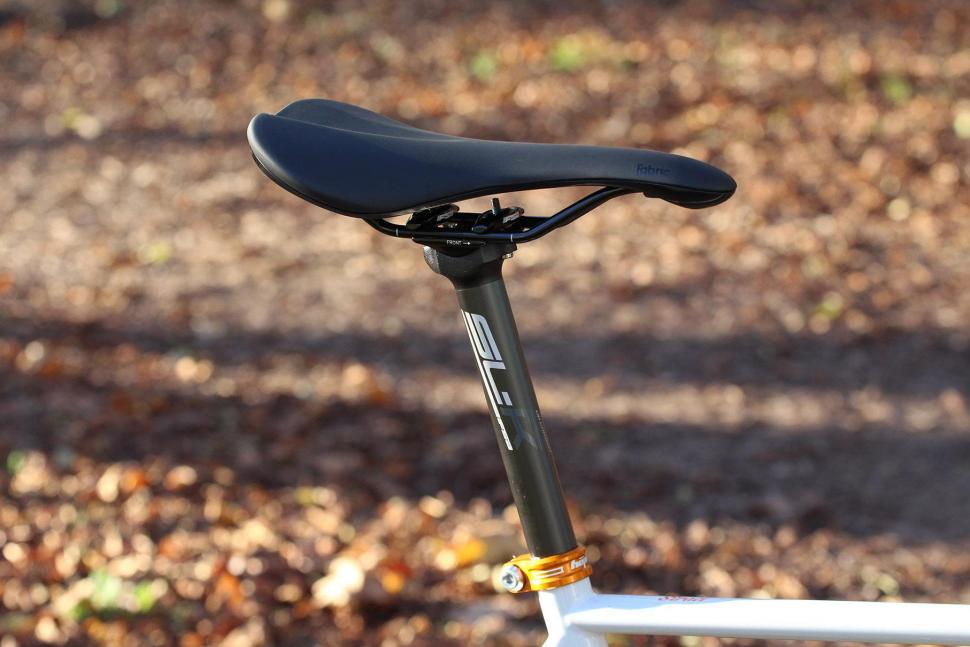
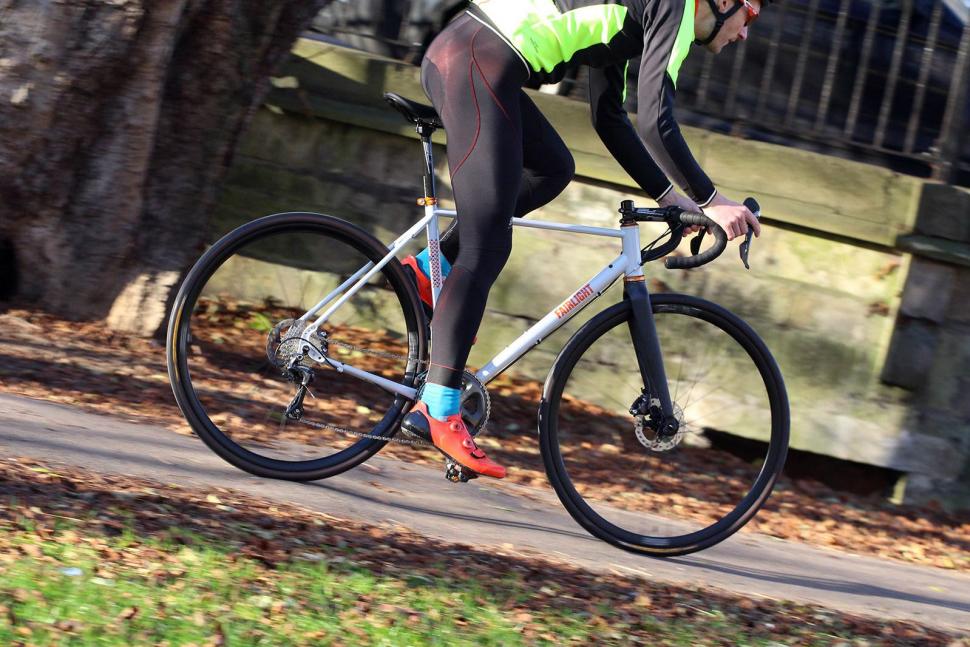
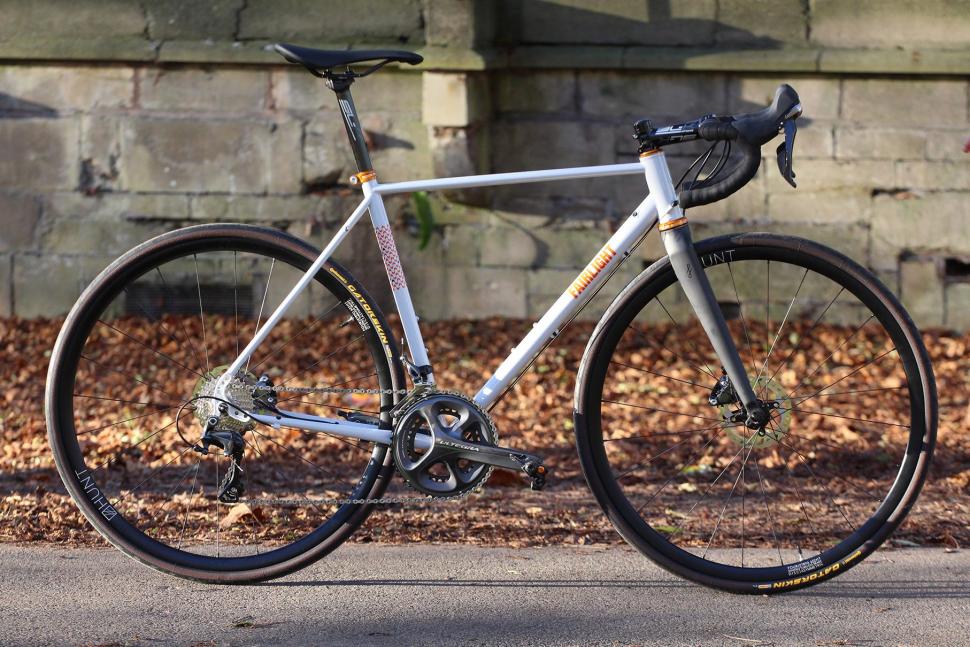
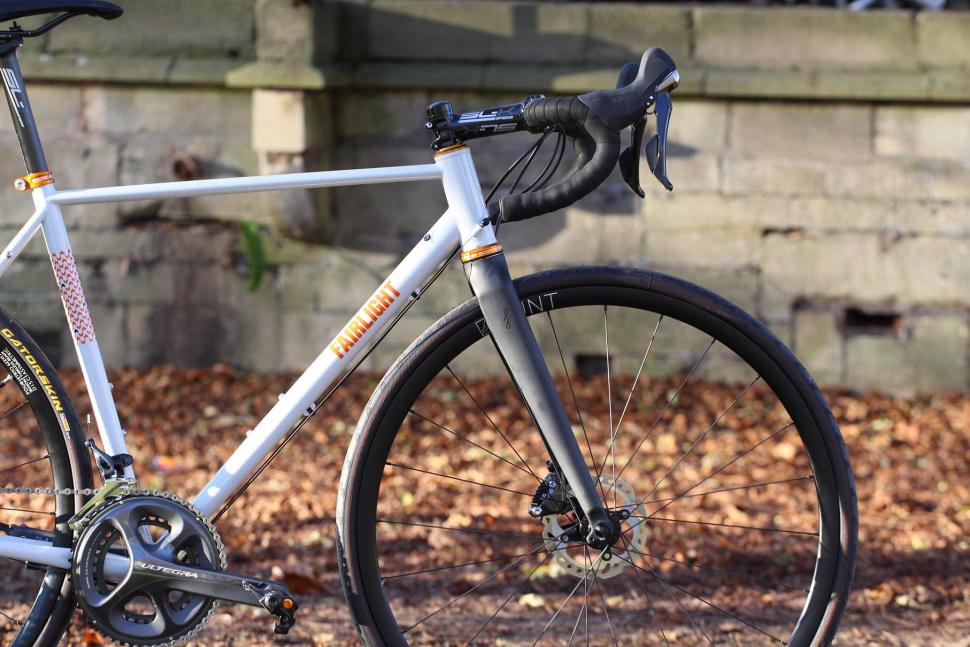


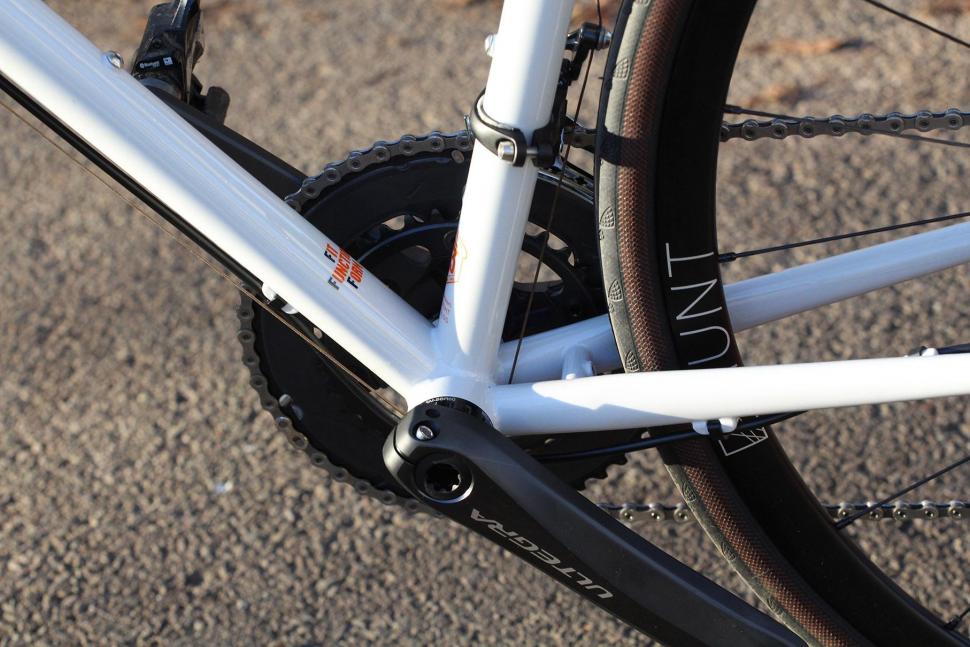


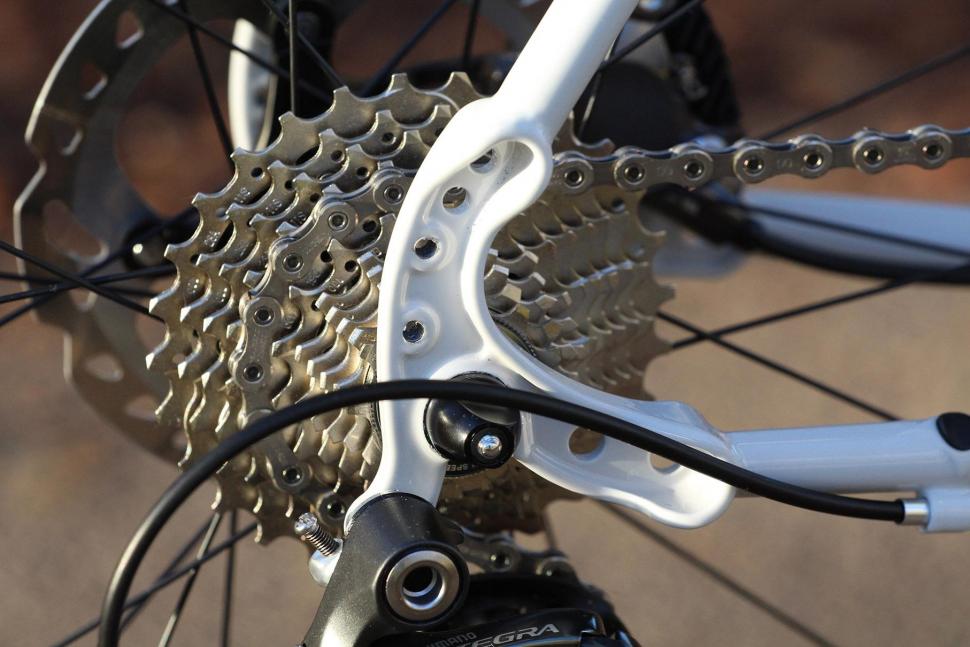



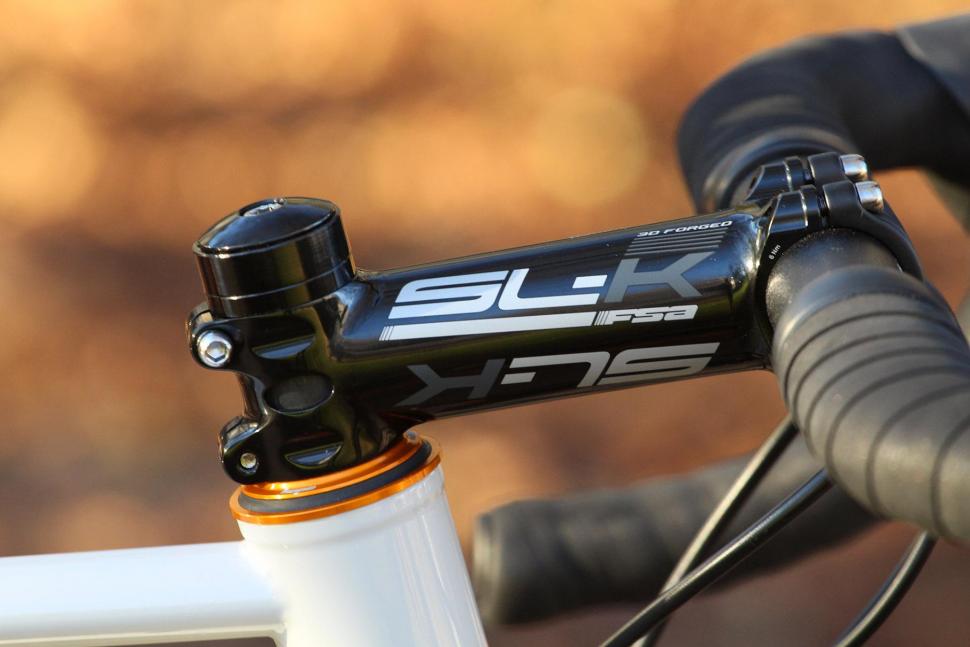


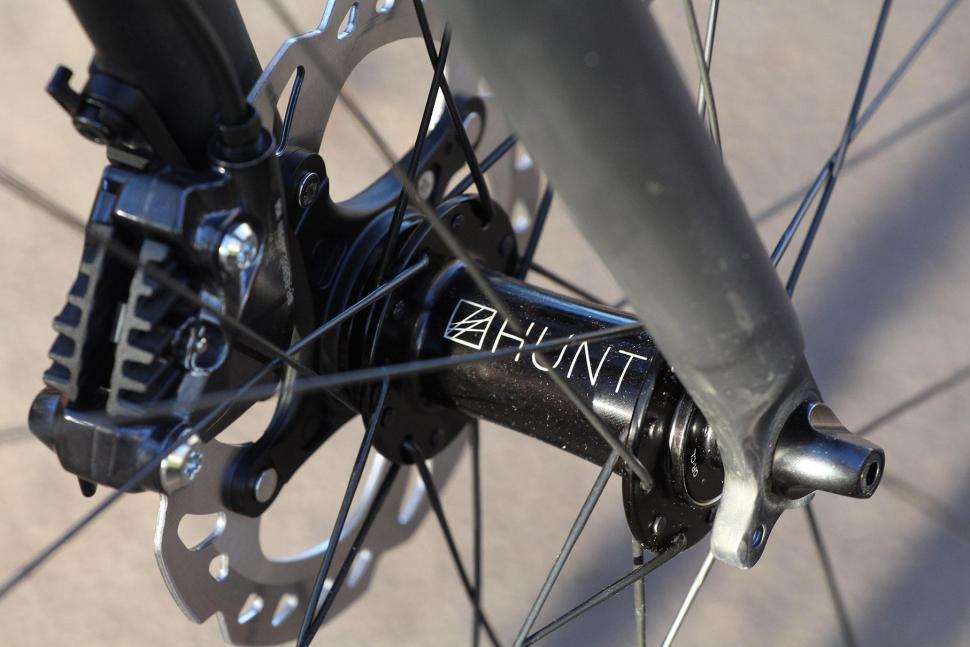


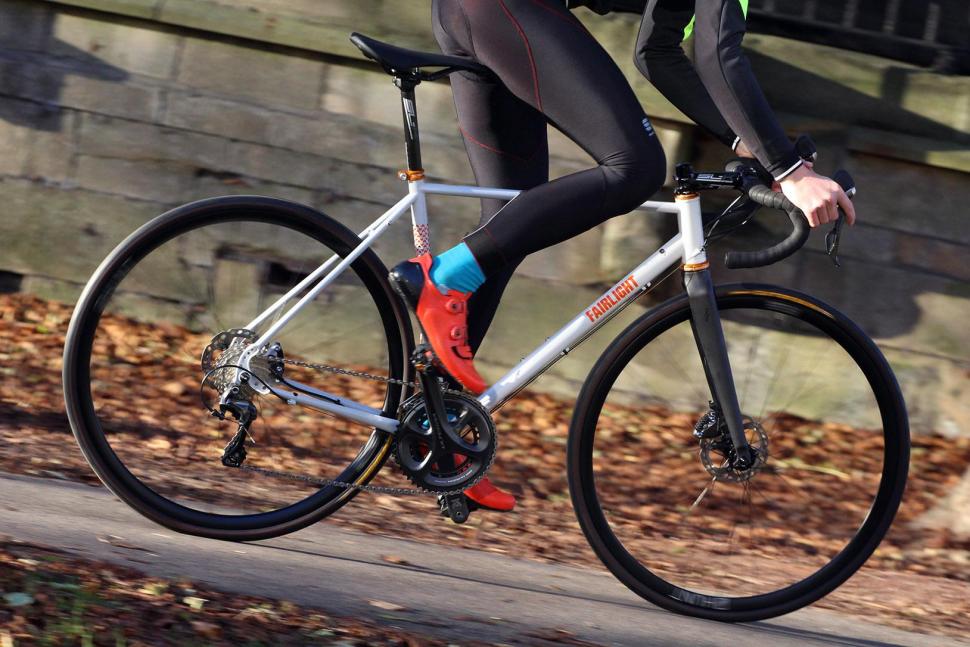


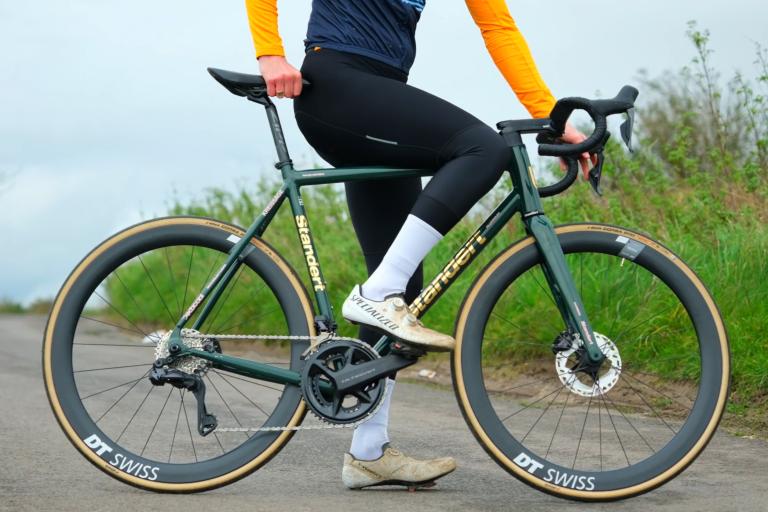
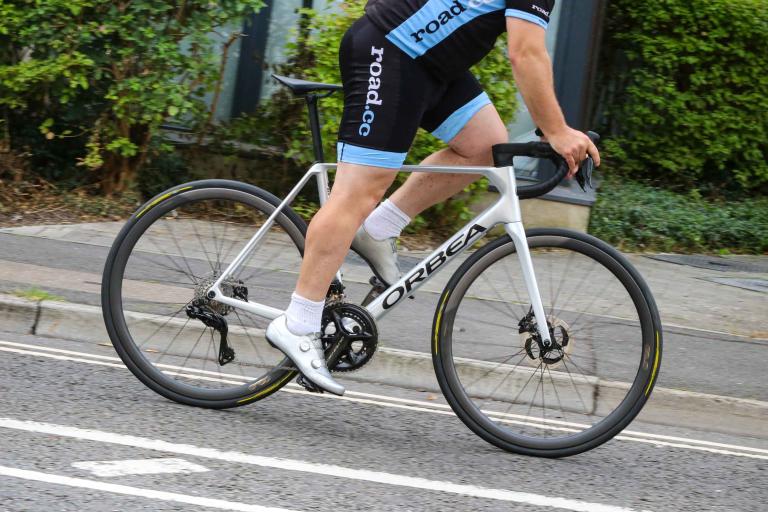
Add new comment
53 comments
Othello - It sounds like the Tall sizing will be perfect for you. Please use our fit guide which is located on all the product pages, it will help to give you an idea on sizing. Simply input your height and inseam and it will generate the info. Or feel free to email us if you would like more advice. Dom.
I really like this bike and am seriously considering one. On the picture it looks like the gear cables are a long way away from the downtube, are they in reality?
steady lad - Glad to hear you are considering a purchase, thankyou! The picture does indeed seem to show the cables postioned very far outwards from the frame. This is not the case and i have used the exact same positioning of the cable adjusters on many previous frame designs. You wont have any problems. Having the cable adjsuters postioned on the headtube reduces cable rubbing.
That's mostly a great looking bike and sounds like it's a well balanced frame design that rewards the rider. From an aesthetic point of view I have to agree with some of the comments on the dropout, but others might think it is thing of great beauty. However the bit that really caught my eye (not in a good way) was the headtube. Looks too fat for the rest of the bike. I realise tapered is the way almost everyone seems to be going for the steerer and that's why the headtube needs to be a fatty or tapered, but not sure it is really needed here, with the proposed usage of the bike. Is there some other benefit to going tapered that's important here? Not often you get the chance to ask a frame designer such questions.
Anyway, nice job Dom. Apologies for being picky.
Ad Hynkel - Thanks for the kind words and no worries about being picky, it is a lot of money to spend so i dont blame you. The headtube aesthetic is similar to the dropout one, in terms of some dig it and some don't. There has been a trend over the last few years for larger headtubes (and thus tapered steerers) both on disc and non disc road bikes. On a race bike with standard calliper brakes (e.g. genesis volare) then the tapered steerer fork makes sense as theoretically you can corner harder, especilly for crit racing. However on an 'all day/audax' bike with standard calliper brakes i would spec a normal 1.1/8 steerer tube and a narrower headtube as the tapered steerer isnt necessary. BUT on a disc bike the tapered steerer does make a difference. The increased braking power means the forces acting upon the fork (and thus also bottom of the headtube & headset) are greater than with a standard calliper brake. The larger steerer tube diamter (1.5") at the bottom helps resist these forces. The ride quality and abiity to dive into corners (as highighted in the review) certainly reflects this. In many ways i agree with you that a standard sized headtube can look nice but as with all design features on the Strael they have been fully considered and selected with function as the driving force. The overall aesthetic is simply the sum of the design choices.
I'm so delighted that the review is positive. Dom deserves it, as I'm sure the bike is awesome. It is definitely something I ponder about...
Now, to more realistic terms...my Genesis Equilibrium 725 disc with alu (1 1/8) steerer and slightly more relaxed geometry (which I "fixed" with -17 degree stem) which costs roughly 500 GBP frameset vs. 900GBP for Fairlight vs. 1450GBP Mason.
I love the 725 tubing and the frame is great...maybe 200-300g heavier, but difference in price...
Ogi many thanks for the kind comment, much appreciated. We think considering that we offer 3 colours, 9 sizes, a full carbon fork and a full European made Reynolds frame (with many custom 'just for us' tubes) it is excellent value. A custom frame using the same tubing would be at least £1600. But im glad you like your Equilibrium disc and as long as you enjoy riding and it encourages you to get out and pedal, then that is all that matters.
The frame only option looks reasonable value for a mainly 853 frame if you're in the market for a luxury winter bike. I would like to see some test results that back up some of the claims made for tube shapes by manufacturers. I'd be surprised if there's much side to side force at the tail end of a top tube for instance. There seems to be some contradiction in specifying round chainstays for stiffness and then ovalising the ends of the downtube for stiffness. This isn't a pop at Fairlight just a general observation.
@daccordimark Fair comments. Every design detail was considered at length and you can read about all the design choices in my Strael design notes blog on the Fairlight site. The rear end is specifically not made from 853, with the 631 and 725 being chosen for their specific qualities relevant to the forces acting upon the respectice parts of the frames. The oval downtube versus round chainstays is certaintly not a contradiction as it depends entirely on which plane the oval is in. A round stay is both stiffer and more comfortable than a standard vertical oval chainstay. A flat horizontal oval chainstay at the BB would be ideal but tyre clearance would be the big problem. Again please do read the design notes as it helps to explain all my thoughts during the design process. They are here: http://fairlightcycles.com/strael-concept-design-notes/
Thanks Dom, I did read through the design notes on both Faran and Strael after commenting, which I admit was maybe the wrong way round!
I completely agree with your take on chainstays, I've always thought deep ones were stiff in the wrong plane.
Gorgeous.
Unfortunately bought my current bike just before these came out but a Faran is at the top of my list now. And having read this review I'm wondering if I'd prefer the racier geo of this. The proportional sizing sounds ideal as I'm relatively short-legged.
A solid review, Stu, nice work.
Same as RobD, I was coveting a Mason but could not justify the cost. This seems to tick all the boxes. Shame they are 200 miles away for a test ride.
Lamb Henry - Thankyou! Im glad you enjoyed your test ride at Swift! Thanks for sharing your feedback with others.
I'm so glad this review has been posted, I only found out about Fairlight very recently (I know they're not very old anyway) they've very quickly jumped right to the top of the shortlist for a new bike this year, I really love the Mason Resolution, but the pricetag is a little harder to justify (moreso to the wife than myself), this looks awesome and probably suits the sort of riding I'd use if for near perfectly.
I wonder if it can be ordered in the Slate and orange colour combo of the Faran as a special order, that would be my perfect choice, along with the orange Hope parts too.
RobD Thankyou for the kind words. The Strael is avaialble in putty or black plus we have a few warm red frames left also. The Hope upgrade can be done in any of Hopes six colours. Dom.
Everything looks great apart from the rear dropouts. Is there an engineering reason for them being so ugly?
agreed, they look like they fell out of the ugly tree from a great height
Hi srchar, glad you like the look of it but im sorry that you dont like the dropouts. Function is our absolute priority every time and these are a result of that mentallity. The castings are very stiff versus a plate. I personally also prefer the aesthetic to the more common plate style.
But why not just bring the tubes together at the dropout, like these:
Surely that's much stronger and neater?
Hi mattewn5 - Thanks for your comment. Firstly the frame you have attached is aluminium so the tubiung is bigger in size versus steel so intergration is a little bit easier, also the process can be done before the entire frame is heat treated thus adding strength to the join. Steel frames are not heat treated in this way. A similar method can be done with steel but it also requires the milling/machining of large holes in the chainstay (which are usually much narrower than aluminum ones) for the flat mounts to be welded in. The maching process has to very accurate as the position of the flat mounts is very precise. This process adds time and cost. The other issue is significant heat input into the chaisntay during welding and thus potentially weakening the chainstay (assuming it isnt an air hardening steel .e.g. 853) and will require further alignment procedures. With the investment casting we know the flatmount is in the correct position and it only requires a single weld process on each side. There is a continual development of products here at Fairlgiht so we are always looking into new ideas to reduce weight, make things strionger and importantly make producution easier. Thanks. Dom
Looks brilliant. Seriously considering building up a Faran frame for commuting....
Pages